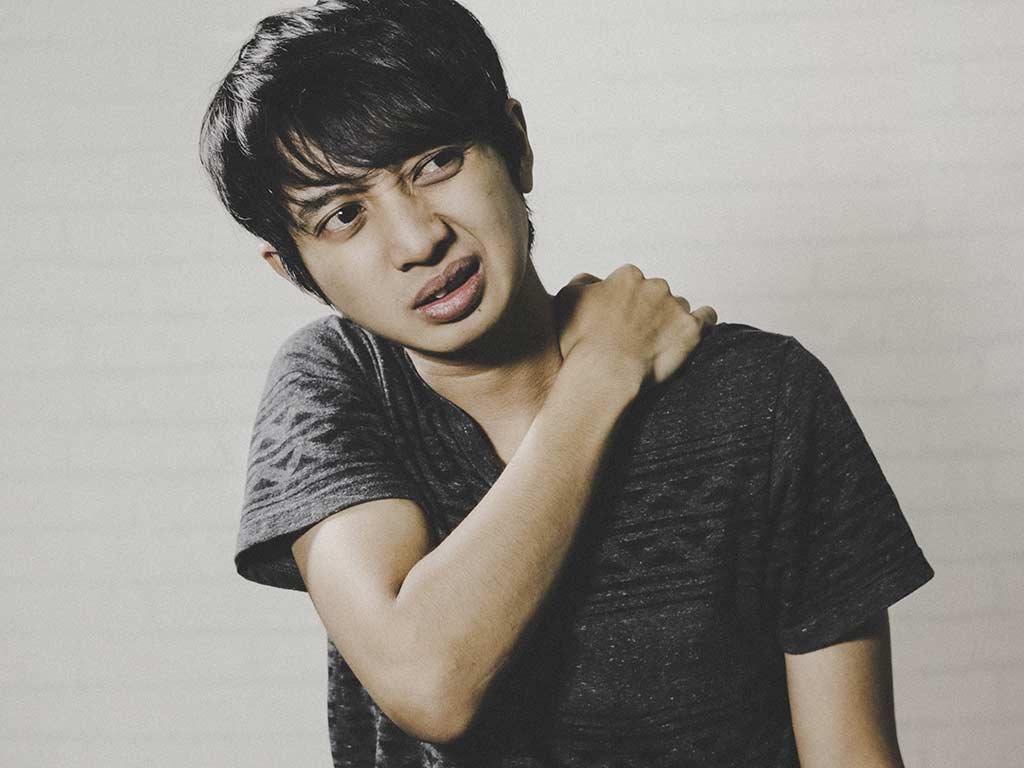
Most young adults don’t expect to suffer from back pain, it is usually associated with people who are much older. However, in your mid twenties to early thirties, it is possible to suddenly start experiencing lower back pain. This kind of soreness can be very debilitating and severely affect your quality of life. Here are three of the main causes of back pain in young adults, and the symptoms to look out for.
1. Back Muscle Strain
One of the most common causes of lower back pain in young adults, back strain is often caused by lifting heavy objects, excessive exercising, sudden movements or twisting into an awkward position. The ligaments and muscles in your back might have stretched or suffered from microscopic tears, thus causing you pain. Back strains will most often heal on their own with the help of some combination of rest, ice and/or heat application, anti-inflammatory pain medications, as well as gradual and gentle stretching and lower back exercises.
Symptoms of back muscle strain include:
- Difficulty walking or standing up straight without pain
- A pain that is dull and achy
- Localized stiffness or soreness upon being touched
- A pain that does not radiate down your legs, but moves around your lower back area, groin and buttocks.
2. Degenerative Disc Disease
Lumbar degenerative disc disease can affect individuals as young as 20. When the lumbar discs between your vertebrae begin to break down, the damaged disc can cause painful inflammation and slight instability in the lower back, which brings about muscle spasms and sometimes sciatica. Degenerative disc disease is common and is often successfully treated.
You may be suffering from degenerative disc disease if you experience any of the following symptoms:
- Back pain worsened by sitting
- Low-level of constant lower back pain punctuated by episodes of severe pain/muscle spasms lasting a few days to a few months
- Walking, even running, may feel better than sitting/standing
- Changing positions frequently relieves pain
3. Lumbar Herniated Disc
A herniated disk refers to a problem with one of the rubbery disks between the vertebrae that stack up to form your spine. You can have a herniated disk without even knowing it, but sometimes a slipped disk can be really really painful. It causes a pain commonly known as Sciatica. Sciatica happens when a nerve root in the lower spine is compressed, causing pain and numbness to travel along the large sciatic nerve that serves the buttocks, legs and feet.
Common symptoms of Sciatica include:
- Pain typically is constant as opposed to flaring up for a few days or weeks and then ceasing.
- Pain is more intense in the leg and foot, rather than the back
- The pain is typically experienced on one side of the buttocks or leg
- Pain is severe after long periods of standing or sitting still but is relieved when walking
- The pain is more of an intense tingling or burning rather than a dull ache.
- May be accompanied by weakness, numbness or difficulty moving the leg or foot
Request Appointment
Get Directions!
Hours
| Monday | 9:00 am – 6:00 pm |
|---|---|
| Tuesday | 9:00 am – 6:00 pm |
| Wednesday | 9:00 am – 6:00 pm |
| Thursday | 9:00 am – 6:00 pm |
| Friday | 9:00 am – 6:00 pm |
| Saturday | Closed |
| Sunday | Closed |
Areas We Serve
Portland Chiropractic Office: Located in the East Portland/Gresham area means our offices are easily accessible from I-205 and I-84 for your convenience. Our Portland chiropractic offices are conveniently located in Portland near Gresham. Our service area includes Portland, Gresham, Troutdale, Parkrose, Mount Tabor, Mill Park, Wood Village, Fairview, Clackamas, Rockwood and the rest of the Portland Metro Area including Vancouver, Washington. If you're in the area, just search "Chiropractors Near Me" and you'll find us.